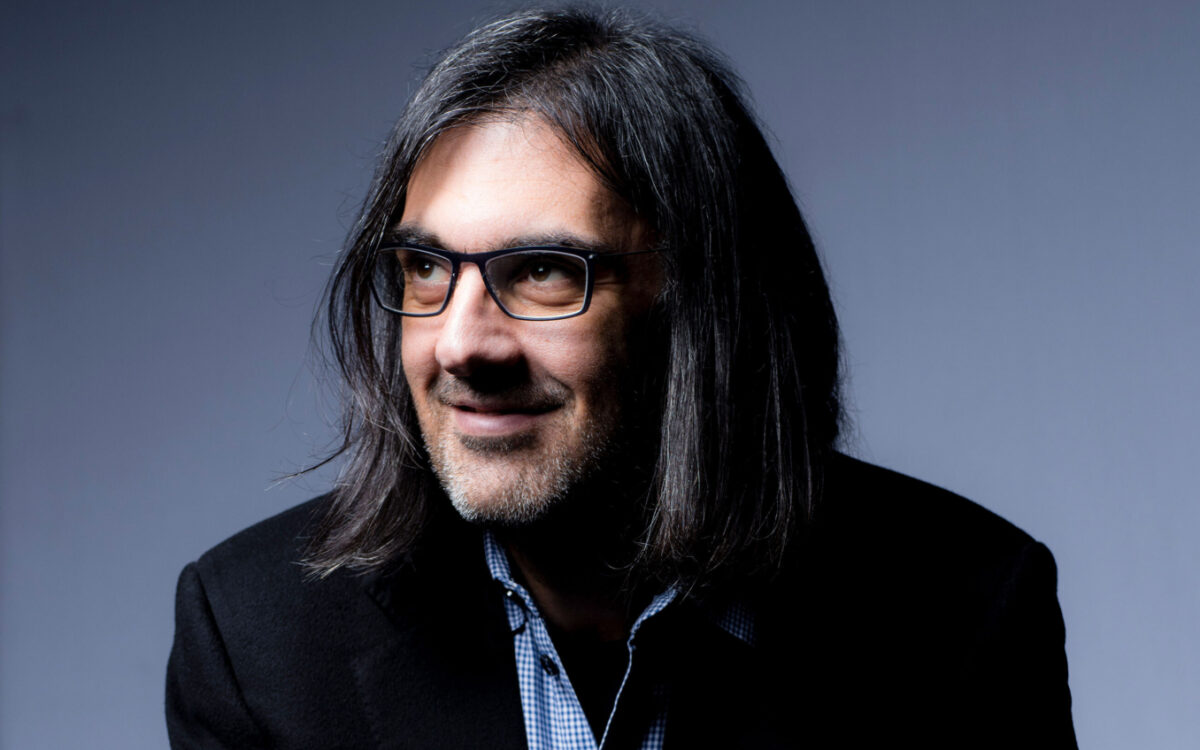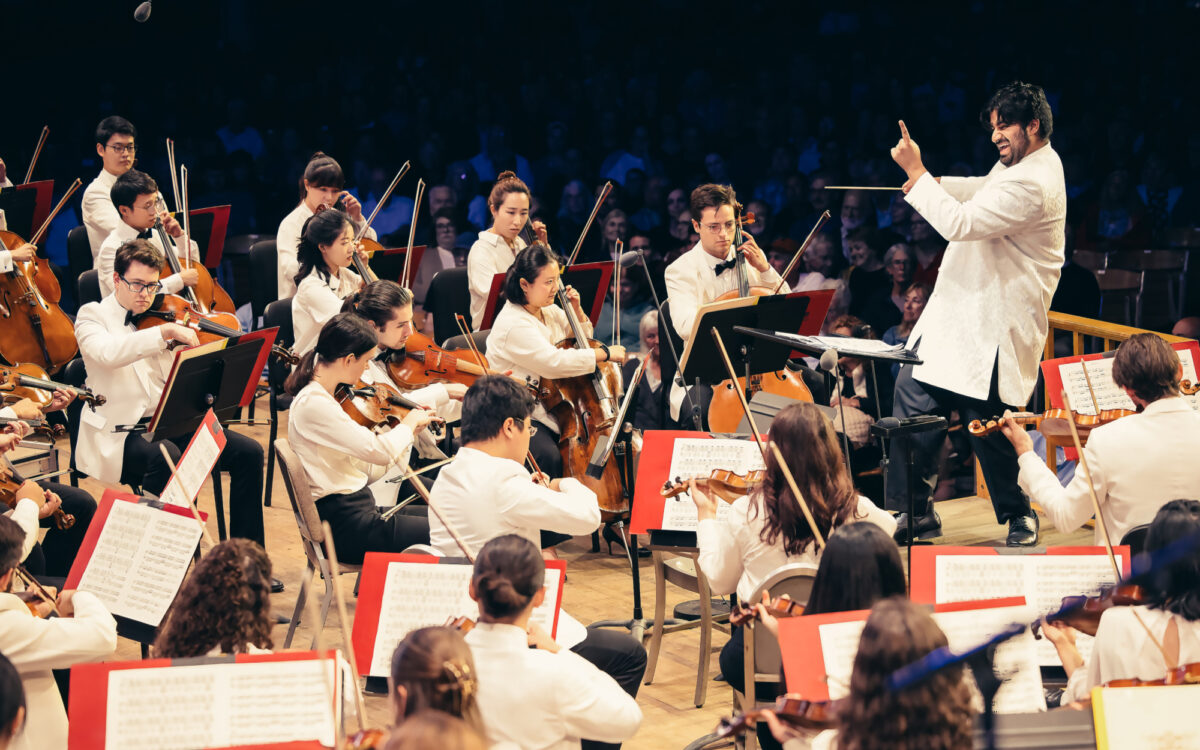Symphony No. 5 in B-flat, Opus 100
Quick Facts
- Composer’s life: Born in Sontsovka, Ekaterinoslav district, Ukraine, April 27, 1891, died at Nikolina Gora, near Moscow, March 5, 1953
- Work completed: 1944
- First performance: Moscow Conservatory, January 13, 1945, State Symphonic Orchestra of the USSR, Sergei Prokofiev conducting
- First BSO performance: Symphony Hall, November 1945, Serge Koussevitzky conducting (American premiere)
Sergei Sergeievich Prokofiev was born in Sontsovka, Ekaterinoslav district, Ukraine, on April 27, 1891, and died at Nikolina Gora, near Moscow, on March 5, 1953. He composed most of the Symphony No. 5 during the summer of 1944 at a composers’ retreat in Ivanovo, Russia, and completed it in Moscow that autumn. Prokofiev himself conducted the premiere performance at the Moscow Conservatory on January 13, 1945, with the State Symphonic Orchestra of the USSR. Serge Koussevitzky and the Boston Symphony Orchestra gave the first American performances in November 1945.
The score of Prokofiev’s Symphony No. 5 calls for 2 flutes and piccolo, 2 oboes and English horn, 2 clarinets, E-flat clarinet, and bass clarinet, 2 bassoons and contrabassoon, 4 horns, 3 trumpets, 3 trombones, tuba, timpani, triangle, cymbals, tambourine, snare drum, wood block, bass drum, tam-tam, harp, piano, and strings.
Though he never returned to his native country after the Revolution and though he became an ardent American patriot, the legendary Boston Symphony music director Serge Koussevitzky maintained a profound inner identity as a Russian and as such sympathized passionately with the Soviet Union’s war effort against the Germans. For this reason, his performances here—often they were American premieres—of the important wartime compositions of Dmitri Shostakovich and Sergei Prokofiev were acts of commitment that went beyond the ordinary range of professional responsibility, ambition, and rivalry with colleagues. Aware of the material difficulties under which Russian composers labored, he regularly arranged to have shipments of music paper sent from Boston to the Soviet Composers’ Union, and it gave him particular pleasure to discover that the score of Prokofiev’s Fifth Symphony, whose manuscript is now in the Boston Public Library, was written on paper that had made the long round-trip from a store on Boylston Street in Boston.
Prokofiev and Koussevitzky, moreover, had known each other a long time. They had certainly known about each other as far back as 1908 when the 34-year-old Koussevitzky, then the world’s leading virtuoso on the double bass and already on the way to his even more important careers as conductor and publisher, repeatedly rejected for publication the scores submitted by the teenage composer. Soon the relationship became more positive. In 1914, Koussevitzky invited Prokofiev to play his Piano Concerto No. 1 at a concert in Moscow, an event that marked the beginning of more than thirty years’ devoted sponsorship on the part of the conductor. Between 1916 and 1937, Koussevitzky published many works by Prokofiev, including the Visions fugitives, the Third and Fourth piano sonatas, the Scythian Suite, the Dostoyevsky opera The Gambler, the ballet Chout, the Lieutenant Kijé Suite, and several books of songs. In addition he frequently invited Prokofiev to Boston: the composer appeared with the Boston Symphony as piano soloist in 1926 (Concerto No. 3), 1930 (Concerto No. 2), 1932-33 (Concerto No. 5), and 1937 (Concerto No. 3), and in 1938 he not only played his First Concerto but conducted the suite from his ballet Chout, the Suite No. 2 from the Romeo and Juliet ballet, and the American premiere of Peter and the Wolf.
Prokofiev’s Third and Fourth symphonies had been byproducts of the composer’s works for the theater, the former using material from the opera The Flaming Angel, the latter from the ballet The Prodigal Son. Not since the Second Symphony of 1924 had Prokofiev set out to write a symphony from scratch when, in the summer of 1944, he began a work “glorifying the human spirit...praising the free and happy man—his strength, his generosity, and the purity of his soul.” The composer also remarked that he thought of the score as “[crowning] a great period of my work.” When he returned to the U.S.S.R. for good in 1933 after a fifteen-year stay in the West, Prokofiev had radically bent his style to suit the imperatives of Soviet theories of art, and, no doubt, to answer some inner needs of his own. His music became more mellifluous, less biting, and surely less inclined to humor, and it can seem downright self-conscious in its concern not to rub the wrong way. Such popular Prokofiev scores of the 1930s as the Violin Concerto No. 2 and the ballet Romeo and Juliet impressively demonstrate the possibilities of his new manner.
Discussion of the evolution of Prokofiev’s later style has, not surprisingly, become mired in politics. Soviet critics, notably his more or less official biographer, Israel Nestyev, tend to imply that the composer only found himself after he came home; Western critics, especially if they are politically conservative, are inclined to deplore the softening of Prokofiev’s music from the ’30s on. Prokofiev had little to say about any of this: unlike Shostakovich, he didn’t even repudiate his own earlier music. It may be, though, that his statement about the Fifth Symphony as a work that “crowns a great period” refers to what a musician might perceive regardless of political context, which is that here the composer has absolutely mastered his style, speaking his chosen language without self-consciousness, discomfort, compromise, and foreign accent. Even in the 19th century, good composers could be baffled by the question of how to confront the sonata style defined by Haydn, Mozart, and Beethoven, how to get at its substance and not just its shell. Here, in the Fifth Symphony, the 53-year-old Prokofiev takes on the challenge with the confidence, the freshness of approach, and the skill of a master.
He begins with a fairly slow movement in richly developed sonata form, picking up from Beethoven (String Quartet in F, Opus 59, No. 1, first movement) and Brahms (Symphony No. 4, first movement) the device of seeming to embark upon a formal repeat of the exposition, only to have a dramatic turn of harmony reveal that in fact the development has begun. The scherzo brings back a touch of the old Prokofiev, the wry humorist from whom Shostakovich learned so much. An Adagio at once somber and lyrical is followed by an exuberant finale. From the symphony’s first page with its tart octaves of flute and bassoon, to the coda of the finale, with that daring scoring for solo strings, piano, harp, and percussion, all of this is most brilliantly worked out for the orchestra.
Michael Steinberg
Michael Steinberg was program annotator of the Boston Symphony Orchestra from 1976 to 1979, and after that of the San Francisco Symphony and New York Philharmonic. Oxford University Press has published three compilations of his program notes, devoted to symphonies, concertos, and the great works for chorus and orchestra.



